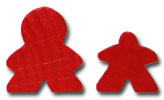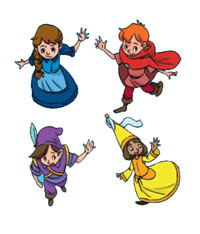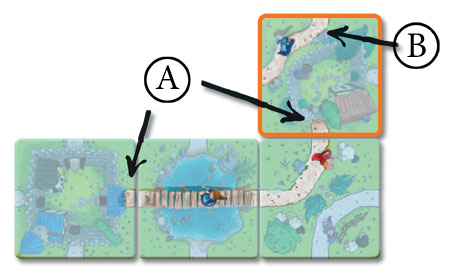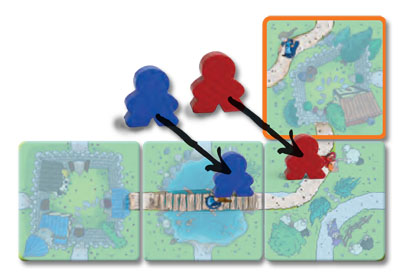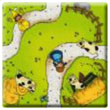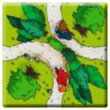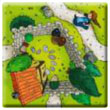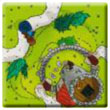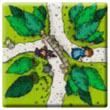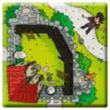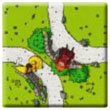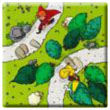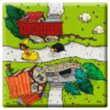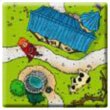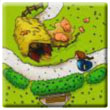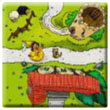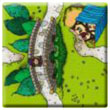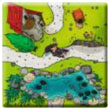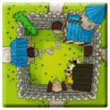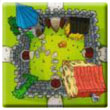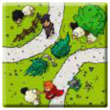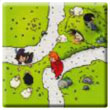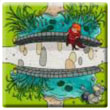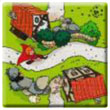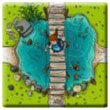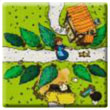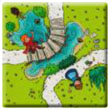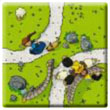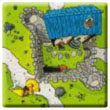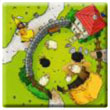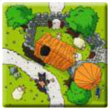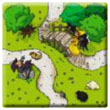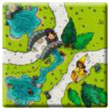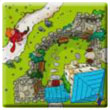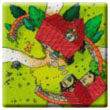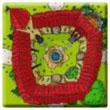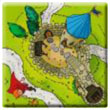Carcassonne Junior Base Game
Each year, the inhabitants of Carcassonne celebrate their national holiday. As is the tradition in Carcassonne, the people celebrate by setting loose sheep, hens, and cows in the street. From dawn till dusk, the kids of Carcassonne have the time of their life trying to bring these animals back.
General Info and Comments
First published by Hans im Glück in 2009 under the name Die Kinder von Carcassonne, and initially translated into English as The Kids of Carcassonne (RGG 2009). It was renamed My First Carcassonne for the first ZMG release in 2014. It is known as Carcassonne: Junior in most non-English versions.
This second ZMG design, with revised artwork and purple, rather than green, player pieces, was released in 2020 along with updated releases in most markets.
A fun and exciting tile-laying game for 2–4 players aged 4 and up from Marco Teubner. This is a children‘s version of the Carcassonne game from Klaus-Jürgen Wrede.
Contents
- 36 landscape tiles (70mm x 70mm - about twice the size of normal Carcassonne tiles)
- 32 game figures (8 in each colour) - larger than meeples from Carcassonne
Preparation
Take all the tiles, shuffle them face down, and then create many piles with these tiles. Place the piles around the table, so that each player has at least one pile within reach. Make sure there is enough room in the middle of the table, because this is where you will build the city with the tiles.
Each player takes the 8 pawns of the colour of their choice. If you are not playing with 4 players, return the unused pawns to the box.
Flip one tile face up and put it in the middle of the table. This is the starting tile for the game. You will start placing tiles around it.
Aim of the Game
During the game, you will build Carcassonne by placing tiles. The first among you to be able to place all of their pawns on the tiles wins the game.
Playing the Game
Starting with the youngest player, you will play one after the other in clockwise order. Continue playing in this order until the end of the game.
Placing a Tile
On your turn, reveal the first tile from the top of the pile of your choice. Then, place this tile next to any other tile that is already placed on the table. The new tile that you place must connect to at least one side of the tiles that are on the table. The tile cannot only touch the corner of a placed tile.
Placing a Figure
The kids of Carcassonne are illustrated on the tiles. There are kids in each of the four pawn colors. Whenever you close a road by placing a tile, players place their pawns on each kid matching their colour that is illustrated on that road.
When is a road closed? : A closed road means that both of its ends are closed off by a house, a pond, etc. A road that loops onto itself is also considered closed.
Example:
When playing with fewer than 4 players, the kids of those colors that are not in play are not taken into consideration during the game.
Game End
The game ends when a player is able to place their last pawn on the tiles. That player is the winner!
In some rare cases, the tiles will have all been placed before a player is able to place all of their pawns on the tiles. In such cases, the game ends when the last tile is placed, and whoever has placed the most pawns is the winner.
If there is a tie, all tied players win!
Once the day is over, the children return home, exhausted after a long but exciting day. The families gather around impressive campfires to celebrate and share the tales of their day, while every inhabitant of Carcassonne savors the delicacies of the region.
The elders then take great pleasure in telling tales of knights, princesses, dragons and fairies, to the wide-eyed kids. Once the tales are over, the children dream of such lands and adventures before finally falling asleep.
And at long last, the animals return to their calm stables and pens.
Of course, the return of these animals is to the delight of all, especially the kids of Carcassonne, who take great care of their animals ...
Tile Distribution



